Know Your Lore: World of Warcraft 2017 story in review
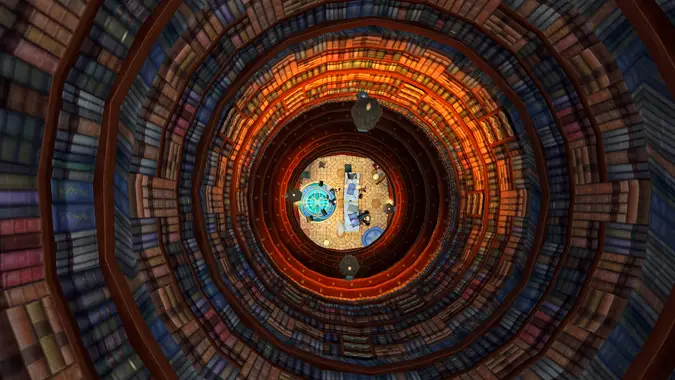
Legion has arguably been one of the most content-packed expansions ever released. Its launch in 2016 was a welcome breath of fresh air after a year of nothing to speak of, and 2017 continued that trend of jam-packed content. Every year we take a broader look at the overall state of lore and story in World of Warcraft, and this year is no exception. With a veritable mountain of new content for endgame players, 2017 certainly wasn’t short on things to do – but how does the story hold up?
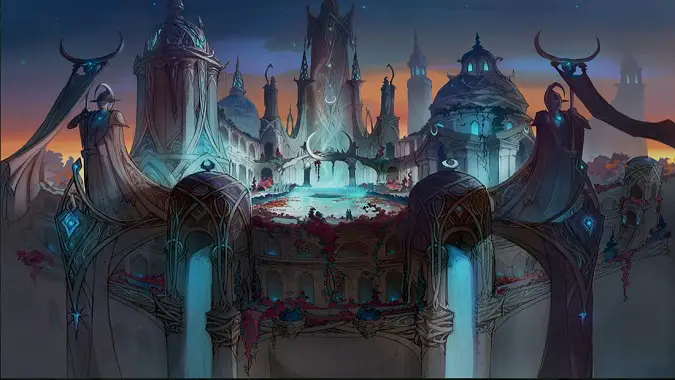
A year of content
It was the year of 77 days – 77 day patch cycles, that is. Throughout 2017, there was constantly something for players to do. This began with the arrival of Nighthold on January 17, which wrapped up the end of the Suramar campaign that began when players hit max level. 77 days later, and we returned to the Broken Shore to break our way into the Tomb of Sargeras. 77 days after that, we entered the Tomb and hunted down Kil’jaeden. And 77 days after that, we headed to Argus.
The staggered nature of content release pretty much guaranteed that nobody ran out of things to do. And each patch was packed with story, beginning with Nighthold. While the raids themselves held plenty of story, it was often the things outside the raids that packed the most narrative punch. After Nighthold, players learn that the Nightwell is being left to die out. With our efforts to establish a cure for the Nightfallen using the fruit of the Arcan’dor, it’s no longer needed.
The Broken Shore wasn’t exactly teeming with story at the onset, but players could delve into the history behind the Tomb of Sargeras in the Cathedral of Eternal Night. There, they meet a familiar spirit – Aegwynn, former Guardian of Tirisfal and mother of Medivh. Once the Tomb of Sargeras is opened, players plunge into its depths and discover that the Tomb has definitive ties to the Titans. Add to that a thrilling face-off with the Avatar of Sargeras, and you’ve got yourself one heck of a raid.
And with the arrival of Argus, players were able to set foot on a world we’ve never seen before…and witness Prophet Velen as he returned home, at long last.
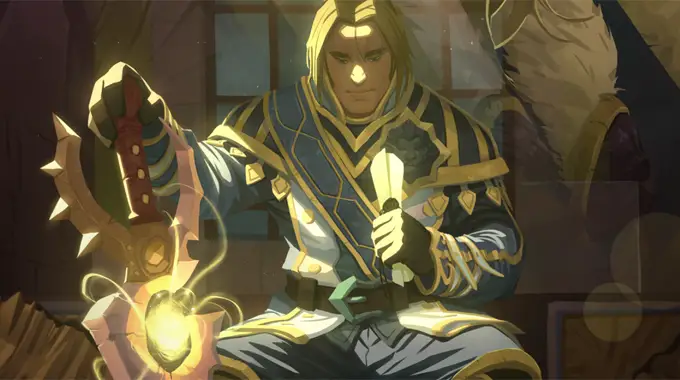
Emotional impact
It was the emotional moments that had the most impact throughout the course of the last year. And there were plenty to be found – particularly on the Broken Shore and Argus. Alliance players finally helped Anduin come to terms with his father’s death in a poignant quest chain with a beautiful cinematic finish. Players of both factions witnessed Argus’ tortured history, and Velen’s sorrow at what he’d left behind.
The return of Turalyon and Alleria was something players had been wanting for years. Their arrival was suitably wrapped in more mysteries that played out over the course of the Argus campaign. Throughout it all, the cinematic team did an excellent job of seeding cinematics exactly where they were most needed. Cinematics have evolved in Legion. No longer reserved simply for the end of a zone, they pop up where they hold the most impact.
And Legion has been full of impactful moments. Whether it’s the return of Illidan Stormrage and his continued path towards a destiny he didn’t ask for, a son’s sorrowful arrival to the place where his father died, or a Prophet, ancient beyond reckoning, struggling with the knowledge of everything he left behind, cinematics delivered an emotional gut-punch that won’t be soon forgotten. Technically, they’ve come a long way from the days of Wrathgate – and yet they still hold the same powerful impact.
In the end, what we’re left with is a beautiful, complex, interwoven story. It’s a far cry from anything we’ve seen in Warlords. It manages to eclipse the sheer amount of story we saw in Mists of Pandaria. And it does so by wrapping up plot threads going all the way back to Warcraft 2.
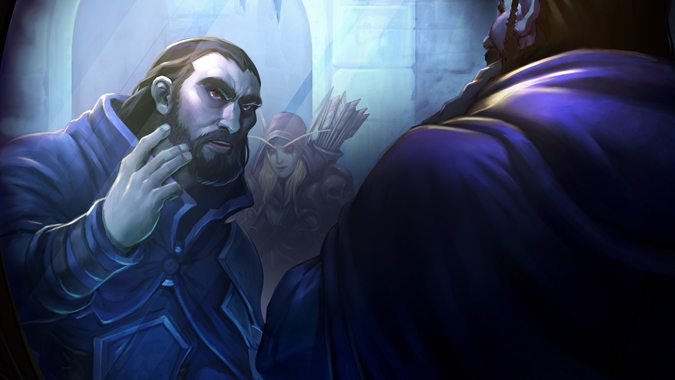
Stories and lore
Here’s the downside to all of this: We got a lot of story in-game. In return, we didn’t get much story material out of it. 2017 saw the release of World of Warcraft: Chronicle Volume 2, which dealt mainly with the history of Draenor. It eventually progressed into the First and Second Wars, and ended with Draenor’s destruction. The book had new information, but it was mainly information surrounding a world we’d already been to – twice – and left behind.
We saw exactly one short story released, Dark Mirror by Steve Danuser. Dark Mirror gave us a little more insight into what Sylvanas was doing, but it mostly expanded on the tale of Nathanos Marris, his death, and his rebirth as Sylvanas’ trusted second. And we got one audio drama – A Thousand Years of War, which explained where Alleria and Turalyon have been all these years.
That’s it.
This is where Mists of Pandaria continues to pull ahead in the list of “best story” in my head. Mists had ten short stories released over the course of its run, and a graphic novel as well as traditional novel on top of that. Legion didn’t lack for story ideas. In fact, it was teeming with them. While we were busy focusing on big efforts, like the Tomb of Sargeras and Antorus, it would have been nice to see stories highlighting the smaller moments, too. Cataclysm had leader short stories, Mists followed factions – wouldn’t it have been nice to see Legion follow along the same lines and highlight individual classes?
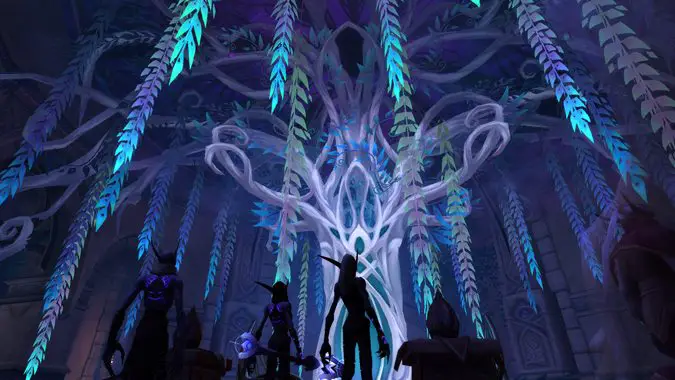
Room for improvement
Honestly, that lack of written prose is the only major criticism I have about Legion. When you hold what we saw solely in 2017 up with the second year of Warlords, there’s a startling difference between the two. Game-wise, Legion has nearly perfected that merge between story and gameplay, and it’s been extraordinary to witness. Any initial worries I had about endgame story petering out a-la Warlords have been firmly dismissed. But hey – there’s always room for improvement, right?
World Quests are an ever-evolving waterfall of endgame content for players. But they don’t necessarily have any weight as far as story is concerned. They’re an improvement over the repetitive and meaningless fill-the-bar missions from Warlords, yes. But they lack any kind of meaningful impact from a story perspective. It would be interesting to what would happen if the same level of detail given to quest chains could be applied to World Quests – what if instead of one minor task, each World Quest was a small two or three-part chain that sent you across a zone?
Mists of Pandaria still sets the bar for making a reputation grind interesting. Not all of the reputation chains were perfect – August Celestials is still a notable disappointment. But chains like the Tillers, or the Operation: Shieldwall/Dominance Offensive still hold the top spot in reputation grinds. Yes, Legion managed this in places – Nightfallen rep in particular is loaded with story. However, most of the other reputations suffer in comparison. Sure, it’s nice to be able to simply complete World Quests to fill a reputation bar. But it’s even nicer when filling that reputation bar has meaning behind it.
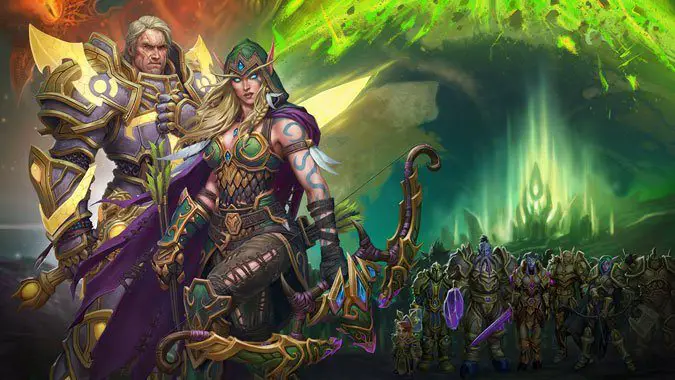
Bringing the past forward
Legion is a brilliant realization of every successful storytelling method used so far being brought together in one action-packed expansion. More importantly, it’s ushering in a new era for World of Warcraft. The stories and events we’re seeing right now are the last vestiges of story threads dating all the way back to the original RTS titles. They’re being wrapped up, one by one – from the lingering question of Alleria and Turalyon’s disappearance all the way to the big-bad Sargeras himself.
Legion essentially cleaned house in terms of old stories hanging around from titles and expansions past. Where that leaves us is…the present. With those remnants of stories neatly resolved, Blizzard is free to turn its attention to other more recent lingering plot threads that need addressing. Like…oh I don’t know, the fate of Kul Tiras. Or that pesky faction conflict that keeps hanging around in the background of every expansion to date.
Legion didn’t just deliver a hell of a story – 2017 finished painting a canvas that’s been in-progress since the release of Beyond the Dark Portal in 1996. Now what? Good question – but with Battle for Azeroth on the horizon, we should be getting that answer in 2018.
Please consider supporting our Patreon!
Join the Discussion
Blizzard Watch is a safe space for all readers. By leaving comments on this site you agree to follow our commenting and community guidelines.
 @Shadesogrey
@Shadesogrey



